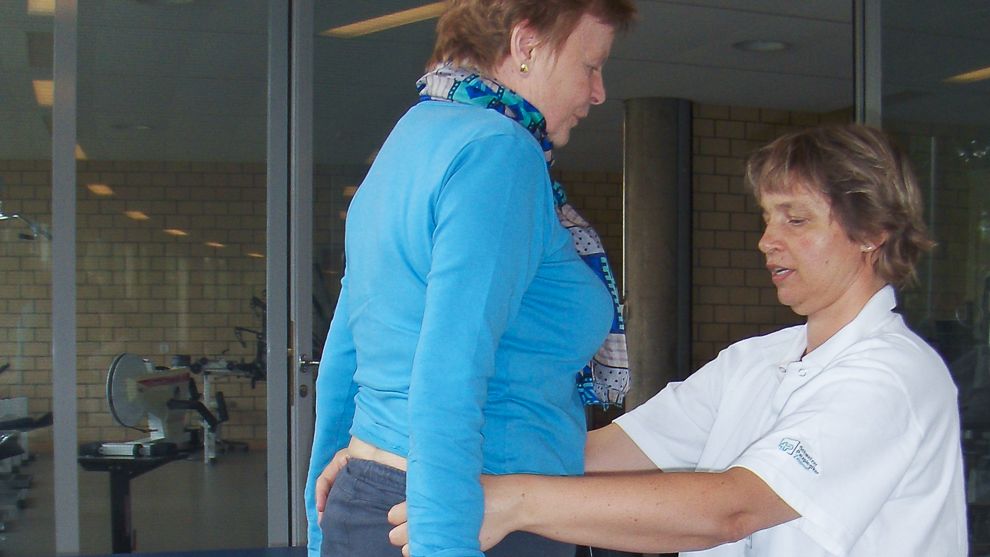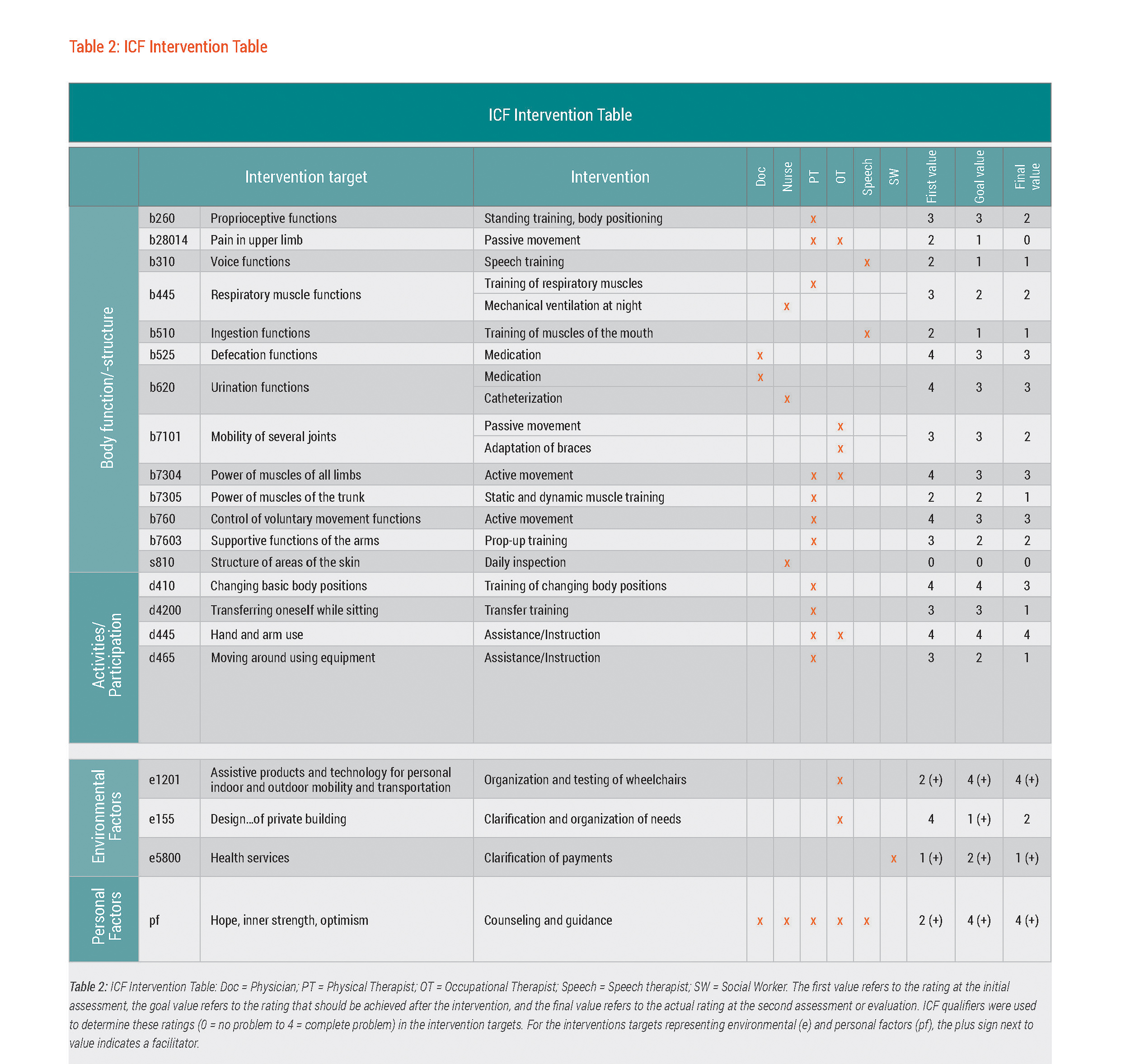Assignment and Intervention

""We celebrate her improvements together...These little celebrations keep and strengthen her sense of hope...and motivates both of us for the next little steps.""
Throughout the intervention phase Helen's rehabilitation team constantly sought balance between Helen’s hopes and the realistic steps toward achieving the goals set. The team members who worked closely and at length with her remained conscious of the need to support Helen's hopefulness while also remaining focused on things over which they had control.
Helen's occupational therapist (OT), for instance, focused on improving the mobility of several upper extremity joints through the use of passive mobilization and hand braces. The OT was also responsible for helping Helen to find and arrange adaptations for a wheelchair-accessible flat. Proprioception i.e. the ability to sense the relative position of body parts was among other intervention targets that were addressed by the physical therapist through standing balance training and body positioning. These interventions, the intervention targets that were addressed with the interventions, and the rehabilitation team member(s) responsible for performing the interventions were outlined in the ICF Intervention Table created for Helen. See table 2.

Table 2: ICF Intervention Table; Doc = Physician; PT = Physical Therapist; OT = Occupational Therapist; Speech = Speech therapist; SW = Social Worker. The first value refers to the rating at the initial assessment, the goal value refers to the rating that should be achieved after the intervention, and the final value refers to the actual rating at the second assessment or evaluation. ICF qualifiers were used to determine these ratings (0 = no problem to 4 = complete problem) in the intervention targets. For the interventions targets representing the personal factors (pf), the plus sign next to the value indicates a facilitator.
In addition to the interventions that tackled the targets related to body functions e.g. passive mobilization, activities and participation e.g. transfer training and environmental factors e.g. organization and testing of wheelchairs, Helen and her rehabilitation team also integrated personal factors – hope, inner strength and optimism – as one intervention target. Since tackling this target required a concerted effort, all the members of Helen's rehabilitation team were assigned to address this through individual counseling and guidance.
Box 3 | Additional Factors to Consider for Integrating Hope into Rehabilitation
Health professionals have an opportunity to choose supportive interventions that recognize and integrate the power of hope as an important personal resource in the recovery phase of GBS. Despite a person's limitations, hope can offer needed energy and motivation to allow the person to move forward in rehabilitation. A number of factors may play an important role for integrating hope in rehabilitative interventions:31314
- setting realistic goals
- belief in oneself and ability to handle one's future
- persons who participate in their own care have a greater sense of hope
- promoting a sense of control by informing the person about developments in treatment/rehabilitation
- making available resources such as information about the disease as well as information related to spirituality
- awareness of own feelings
- relationship with family, friends, caregivers
- flexibility of person and rehabilitation team to adapt to changes and evolving circumstances
- acknowledgement that there is a future; being future/goal-oriented
Members of the rehabilitation team describe their experiences of working with Helen and of promoting hope as part of Helen's rehabilitation:
Helen shifts between phases of intense hope for improvement and then suffering from her impairments … a lot of both optimism and pessimism...To inspire hope in Helen, I tell her that I share her hopefulness that her functioning will improve. Nevertheless, it’s important to clarify over and over again that we are not working on her hand function right now but on the improvement of realistic activities like maneuvering the wheelchair on her own. That means focusing on the present rather than the more uncertain future...To emphasize this, I highlight every little improvement when it happens. For example, she is now able to move an electrical wheelchair with a standard control. This is a major improvement because she will no longer need expensive technology and it increases her independence. These small triumphs really motivate her and further strengthens her hope.
Helen’s Occupational Therapist
To maintain and strengthen Helen’s hope, I tried to explain to her that her hand function alone isn’t enough for her to manage her day. Improving hand function is still a future global goal, but at the moment we have to define smaller, achievable goals...We celebrate her improvements together (for example, by going for coffee). These little celebrations keep and strengthen her sense of hope...and motivates both of us for the next little steps.
Helen's Physical Therapist
I try to steer the middle course between fostering too much and too little hope. She has to be patient. I try to strengthen her patience, to maintain hope for improvement.
Helen's Nurse